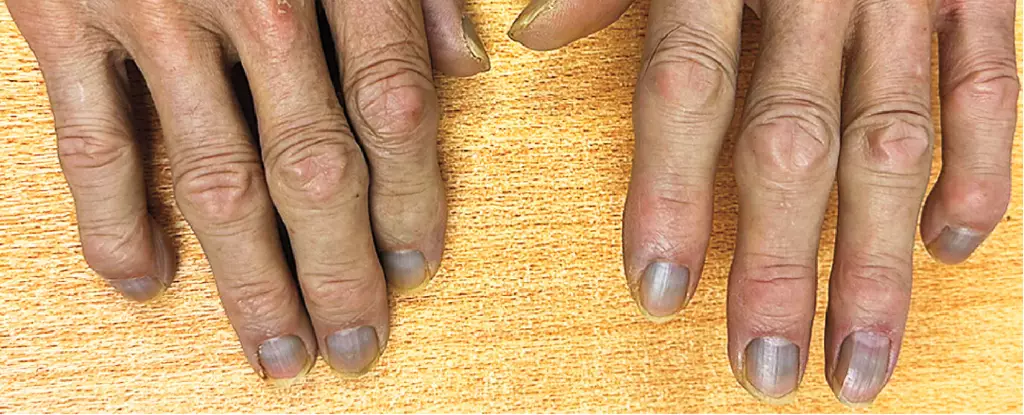In the bustling medical landscape of Hong Kong, clinicians are frequently faced with an array of puzzling cases that challenge their diagnostic skills. One such case involved an 84-year-old man who presented to a local hospital with urinary flow obstruction. However, what truly caught the attention of the medical team was not just the urinary issues. The patient exhibited an astonishing grayish hue to his skin, eyes, and nails—symptoms that appeared unrelated to his primary complaint yet warranted immediate investigation. Understanding the unique nuances of this case provides insight into a rare medical condition, argyria.
As clinicians delved deeper into the man’s medical history, they uncovered that the ashen discoloration was not a recent development. The patient had displayed this unusual appearance for five years. Blood tests revealed an alarming concentration of silver in his system, exceeding typical levels by more than forty times. This excessive accumulation is characteristic of argyria, a condition resulting from silver deposits in the body’s tissues. When silver interacts with bodily chemicals, it forms tiny oxidized granules that manifest in the skin, often giving rise to the dreaded slate-gray appearance.
Historically, argyria has affected individuals who worked closely with silver, including miners and artisans. However, in this case, the patient’s occupational background as a waiter did not suggest a plausible source of exposure to silver. This discrepancy added an element of intrigue to his case, as it raised questions about the origins of his silver accumulation. Notably, exposure to colloidal silver—an unregulated dietary supplement claimed to confer various health benefits—has become increasingly common, despite definitive scientific evidence lacking to support such claims.
Colloidal silver has been touted in many parts of the world as a miracle solution for various ailments. However, health authorities, including the US Food and Drug Administration (FDA), have issued warnings regarding its safety and efficacy. Despite these alerts, the market for colloidal silver flourishes, with products being sold as ‘better health solutions’ without valid scientific backing. The continued use of such supplements exposes individuals to the risk of developing argyria, even if underlying health issues are not apparent.
The patient’s case highlights a critical point: the allure of ‘natural’ remedies can lead to unintended consequences, including the severe cosmetic effects seen in argyria. Although the systemic buildup of silver does not pose a significant immediate threat to long-term health, it raises concerns about the potential for interaction with certain medications, particularly antibiotics.
The mystery of the patient’s condition extends beyond the diagnosis of argyria. Despite a thorough investigation into his background and living conditions, no clear source of silver exposure could be identified. This leaves open questions about the environmental factors contributing to systemic silver buildup. The patient’s neighbors, coworkers, and even home environment did not show similar signs, further complicating this case.
Although the presence of silver in the body may not impose serious health risks at lower concentrations, the persistent gray color can be psychologically distressing for those affected, as societal perceptions often equate appearance with health. Unfortunately, no current medical interventions can effectively reverse the effects of silver deposition, leaving many patients with the lifelong impact of their condition.
While medical professionals may have diagnosed this patient and documented his silver status, the ongoing exploration of the sources and treatment of argyria remains vital. As medical science evolves, understanding cases like this one will contribute to a broader comprehension of how environmental and medicinal factors interplay, often in unexpected ways. This case serves as a poignant reminder of the importance of questioning the safety of widely marketed supplements and the need for rigorous scientific evaluation in the realm of alternative health solutions. The journey from diagnosis to management requires vigilance, not only for the individual patient but for public health as a whole.


Leave a Reply